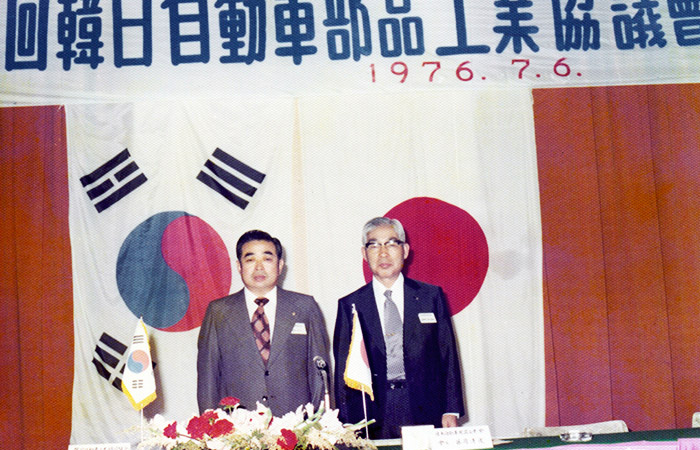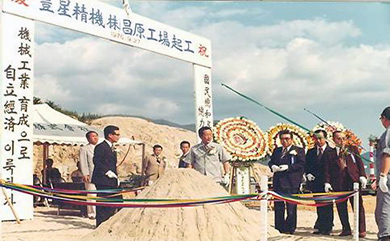3. Establishment of POONGSUNG Precision Corp. as a joint venture company with NIPPONDENSO
(2) Establishment of POONGSUNG Precision Corp.


In 1976, POONGSUNG Electric established “POONGSUNG Precision Corp.” as a Japanese-Korean joint venture with NIPPONDENSO, promoting the establishment of a facility capable of producing 40,000-50,000 vehicle clusters (instrument panels) per year at Changwon National Industrial Complex.
Under the government’s localization policy, POONGSUNG Electric began development of instrument clusters, previously dependent on imports, in 1974, and succeeded two years later in 1976. After a test period of about six months, the clusters reached the stage of commercialization.
The government expected that localized production of instrument clusters would save an amount equivalent to US $800,000 in foreign currency annually and finished their review of the formulation of standard specifications by vehicle type, including passenger cars and cargo vehicles produced in South Korea, to actively popularize instrument clusters. Then, in January 1977, POONGSUNG Precision first produced an automotive cluster (instrument panel) in South Korea and equipped it in the Hyundai’s “Pony,” the first independently produced Korean car model.

At this time, POONGSUNG Electric was designated by the government as a plant specializing in automobile products. In addition to the government’s basic development plan for the automotive industry, POONGSUNG Electric resolutely promoted technological innovation, production increases, and new investments in main parts, supported by vigorous production increases by Hyundai Motor and Kia Motors. In 1979, POONGSUNG Electric surpassed 200,000 units of instrument panel production and began to emerge as a leading manufacturer in the South Korean electrical equipment market.